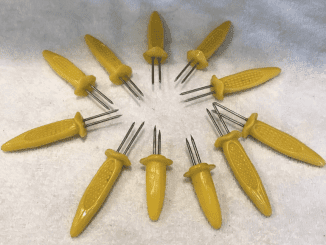Cast iron frying pans have been a staple in kitchens for generations, and for good reason. These sturdy, reliable, and durable pans have stood the test of time, offering a unique combination of functionality and charm. But are they still relevant in today’s modern kitchens filled with sleek stainless steel and high-tech gadgets? Absolutely!
While cast iron may seem like a relic from a bygone era, it’s far from outdated. In fact, they’re experiencing a resurgence in popularity, with chefs and home cooks alike rediscovering their many benefits.

One of the most remarkable features of cast iron pans is their exceptional heat retention. Once heated, these pans keep your food hot and delicious, ensuring that your meal stays warm from the stovetop to the table.
This incredible heat retention is due to the thick, dense material of cast iron. It takes a little longer for these pans to warm up compared to their lighter counterparts, but once they’re hot, they stay hot, providing consistent and even heat distribution for perfect cooking results.
Cast iron pans are incredibly versatile and can be used on various heat sources. Whether you’re using a gas, electric, or induction stove, these pans will work wonders.
You can even place cast iron pans directly in the oven, making them perfect for stove-to-oven dishes like frittatas, casseroles, and even baking bread. And if you enjoy outdoor cooking, cast iron pans can be used over an open flame, like a campfire, for a truly rustic experience.
Contrary to popular belief, cleaning cast iron pans is not as intimidating as it seems. Once you get the hang of it, it’s actually quite simple.
The key is to avoid using soap, which can strip away the natural seasoning that creates the nonstick surface. Instead, scrub the pan with hot water and a scrub brush or a chainmail scrubber.
Cast iron cookware comes in a wide array of shapes and sizes, offering a pan for every cooking need. From pots and cake pans to pizza pans and grills, you can find a cast iron option to suit your culinary adventures.

The best part is that all cast iron cookware shares the same qualities: exceptional heat retention and a natural nonstick surface. Whether you’re searing steaks, baking bread, or making a hearty stew, cast iron has you covered.
One of the most significant advantages of cast iron cookware is its affordability. These pots and pans are not only reasonably priced but they are also designed to last.
With proper care, cast iron cookware can last a lifetime, becoming a treasured heirloom passed down through generations.
You might even stumble upon some remarkable deals on cast iron cookware at secondhand shops or thrift stores. Don’t be discouraged by aged or rusted cast iron pans; they can often be restored to their former glory with a little TLC.
Many cast iron pots and similar items are both practical and aesthetically pleasing. They can serve dishes directly to the table, saving you from washing extra dishes and adding a touch of rustic charm to your dining experience.
Numerous eateries use small cast iron frying pans to serve mac and cheese, mini pizzas, and shakshouka, taking advantage of the pan’s heat retention to keep the food warm and delicious.

Research suggests that cooking certain foods in cast iron pans can increase their iron content. While it’s not a cure for iron deficiency anemia, it can benefit those who need to boost their iron levels in addition to supplements and dietary changes.
Foods high in acidity, such as tomato sauce, rice, fried eggs, and applesauce, are more likely to benefit from cooking in cast iron due to enhanced iron absorption.
While cast iron cookware can be a helpful source of iron, it’s essential to consume iron in moderation. Too much iron can adversely affect the body, such as increased production of free radicals. Excessive iron intake is also linked to diseases like heart disease, Alzheimer’s, and colorectal cancer.
Individuals who follow a vegan or vegetarian diet and women who menstruate typically do not need to worry about consuming too much iron.
However, for those who consume a lot of red meat, take fortified foods, or have genetic hemochromatosis, it’s essential to be mindful of iron intake, especially when using cast iron cookware.

Cast iron cookware is ideal for searing, baking, frying, roasting, sautéing, and browning. It can be used to make a variety of dishes, including baked items, eggs, and vegetables.
With a little practice, you’ll be able to create culinary masterpieces using your trusty cast iron pan.
Properly seasoning the pans can help limit iron absorption into meals. Notably, seasoned and older cookware is less likely to absorb iron than newer ones.
Seasoning involves creating a protective layer of polymerized oil on the surface of the pan, which helps prevent rust and creates a natural nonstick surface.
Cast iron cookware is more than just a kitchen relic. It’s a versatile, durable, and affordable cooking tool that can enhance your culinary skills and add a touch of rustic charm to your kitchen. Whether you’re a seasoned chef or a novice cook, cast iron pans offer a unique and rewarding cooking experience.


